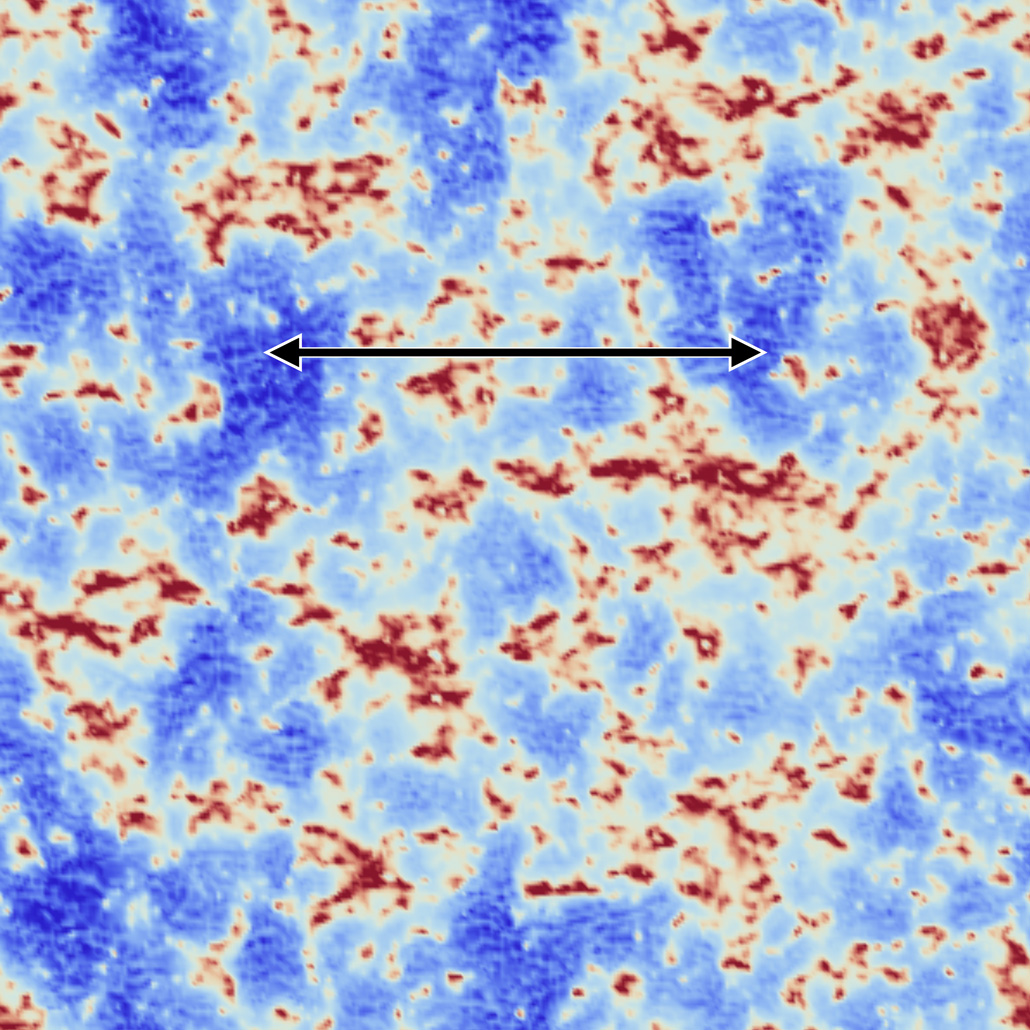This post was originally published on this site
Julian Muñoz has come up with a ruler to measure the early universe.
A theoretical physicist, Muñoz studies the distant, dim period in the universe’s history known as cosmic dawn. That’s when stars first began flickering on, a few hundred million years after the Big Bang, infusing the universe with initial glimmers of starlight and forming the first galaxies.
Before the first stars, the universe was cold and dark — as Muñoz describes it, “boring.” Then, starlight began to reshape the universe. “It is a very dramatic epoch,” says Muñoz, of the University of Texas at Austin.
That epoch is also poorly understood. Cosmic dawn is so unexplored that Muñoz compares it to an uncharted area on early maps of Earth. There, Muñoz says, “there could be dragons.” By studying this era, he hopes to reveal the behavior of one dragon of the cosmos, dark matter, the inscrutable substance whose mass binds galaxies.
But to understand the cosmos, scientists have to be able to measure it. Looking far into space means looking deep into the past. The trouble is our 2-D view of the sky doesn’t readily reveal how far away things are. “When we look at the night sky, we’ve got no depth perception,” says cosmologist Adrian Liu of McGill University in Montreal.
Scientists have devised a variety of methods to get a handle on distances, including standard candles and standard rulers — objects of known brightness or length. If you know how bright an object is (compared with how bright it appears) or you know how long a particular feature is on the sky (compared with its apparent length), you can tell how far away it is. A ruler looks smaller from 20 meters away than from 10 meters away, and a 20-watt lightbulb looks dimmer the farther away it is. The same applies over cosmic distances.
Scientists use certain types of exploding stars, for example, to estimate distances, because the blasts put out a predictable light show (SN: 5/8/12). Standard rulers or standard candles can be used to trace out how far away other objects of interest are and reveal how rapidly the universe has expanded over its history.
But none of the known standard objects reach back to the cosmic dawn era. That’s where Muñoz’s ruler comes in. “This ability to reach that far back,” Liu says, “that’s the really valuable thing.”
Sizing up cosmic dawn
No one has ever seen a conclusive signature of cosmic dawn — the very first galaxies are too distant to observe directly. But there’s another way to spot cosmic dawn’s effects, one that’s been a long-sought target for astronomers. As the first stars formed, their light heated the surrounding hydrogen gas, causing it to absorb light with a wavelength of 21 centimeters, a number that results from the separation between energy levels in hydrogen atoms. Observing that 21-centimeter absorption signal is the aim of the Hydrogen Epoch of Reionization Array, or HERA, collaboration, an effort that Muñoz and Liu both work on, using a radio telescope in South Africa.
If it can be detected, this absorption signal should have subtle, ring-shaped patterns imprinted in it, Muñoz reported in 2019 in Physical Review Letters.

Those patterns, the basis of his ruler, result from the differing behavior of dark matter and normal matter during an even earlier period, less than 400,000 years after the Big Bang. Sound waves careening through the plasma at that time would have pushed normal matter to high speeds while leaving dark matter at a standstill.
This mismatch in velocities affected where galaxies formed during the later cosmic dawn era. To create a galaxy, dark matter must gravitationally reel in normal matter. But where the velocities differed, the normal matter zipped right on by. The early universe was left with sparsely populated regions of the sky, arranged in ring-shaped patterns with a predictable distance scale. The rings, which are too subtle to pick out by eye from the data but show up in statistical analyses, have radii of half a billion light-years – that’s one long measuring stick.
The new standard ruler could reveal how fast the universe was expanding back then. That information can tell scientists what that youthful universe was made of, revealing the amount of dark matter, normal matter and dark energy, another hidden piece of the cosmic puzzle.
A new expansion measurement could also add fuel to one of the fiercest debates in cosmology. Currently, different measurements of the universe’s expansion rate clash with one another, leaving scientists pondering whether there are flaws in our understanding of the cosmos.
Seeking to understand the unknown, including these shadowy cosmic realms, is “an integral component of human nature — like art and poetry,” Muñoz says. “You could live without it, but I really hope you don’t have to.”
Looking into dark corners
Muñoz’s interest in dark matter drew him to the cosmic dawn. The first galaxies grew off a scaffold of dark matter. So information about how and when those galaxies formed can reveal dark matter’s properties. In a report published in 2018 in Nature, for example, Muñoz and colleagues suggested that, if some of the universe’s dark matter had a tiny electric charge, a millionth of an electron’s, that could alter the expected cosmic dawn signal.
He has also developed important computational tools, like a new technique that allows for lightning-fast simulations of the cosmic dawn, reported February 16 at arXiv.org. The time it takes to perform these simulations has previously limited what scientists can study.
“He’s got an eye for interesting ideas,” says theoretical physicist Marc Kamionkowski of Johns Hopkins University, Muñoz’s Ph.D. adviser. But the cosmic ruler, “that’s probably the most singular idea that he’s had.”
Becoming a physicist, in itself, was uncharted territory for Muñoz. As a child, he liked science. He recalls being amazed by fossilized shark teeth that were millions of years old — perhaps his first experience grappling with such grand timescales.
But Muñoz didn’t have a scientific role model; his parents didn’t finish high school. He focused his attention on video games and coding until a high school physics teacher encouraged his scientific streak. He turned to physics, he says, where “it was possible to channel all this nerdy energy for knowledge.” That’s what drives Muñoz to explore the questions that swirl around dark corners of the cosmos. “I do it because I think the answers enrich the human experience.”
Julian Muñoz is one of this year’s SN 10: Scientists to Watch, our list of 10 early and mid-career scientists who are making extraordinary contributions to their field. We’ll be rolling out the full list throughout 2023.
Want to nominate someone for the SN 10? Send their name, affiliation and a few sentences about them and their work to [email protected].

